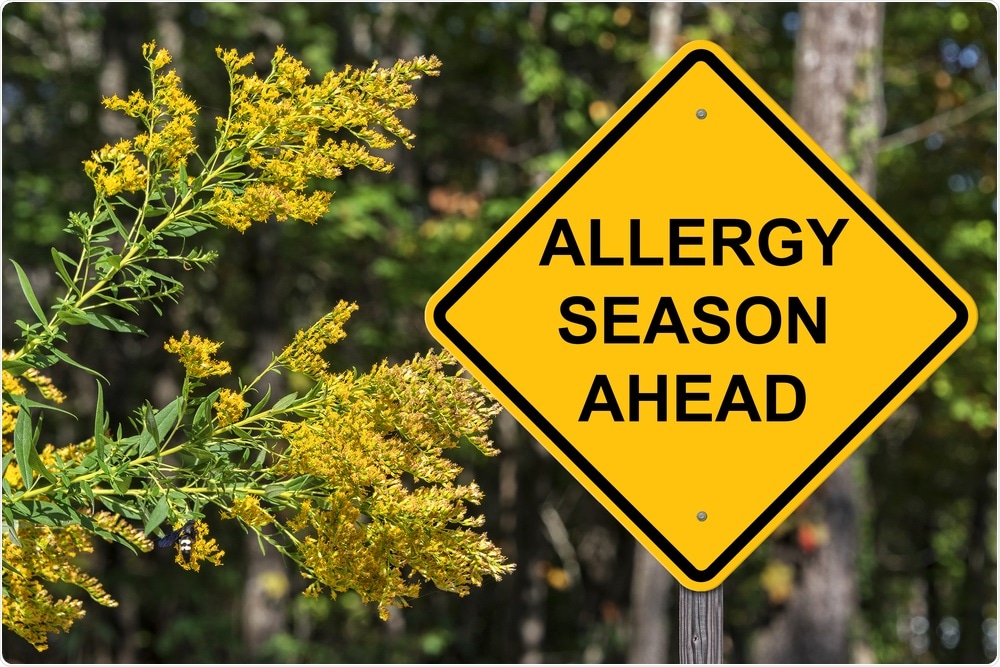In this interview, AZoLifeSciences speaks to Dr. Ben Wheeler about his latest interdisciplinary research and how we monitor pollen levels using environmental DNA.
Over 400 million people worldwide suffer from hay fever with another 300 million suffering from asthma. What inspired your research into allergies and pollen?
Pollen allergies affect hundreds of millions of people worldwide, and grass pollen is one of the most important aeroallergens.
We need to understand the distribution of pollen over space and time, and to really get to grips with relationships with health outcomes at a population scale so that we can respond appropriately in terms of environmental and public health actions. This will be particularly pertinent in coming decades when climate change and other environmental changes are likely to lead to changes in the timing, geography, and intensity of pollen released from different plants.

Allergy Season. Image Credit: Jim Vallee/Shutterstock.com
How does grass pollen cause respiratory conditions such as asthma and hay fever?
Grass pollen includes a range of allergenic proteins. For people who are allergic to these proteins, a complex interaction between the proteins and the immune system can result in a range of symptoms.
Common allergic responses to pollen include allergic rhinitis (hayfever) and exacerbation of asthma (amongst people who have allergic asthma).
Why are researchers still unclear as to which grass species causes the most problems for human health?
A key challenge is that traditional methods of pollen identification using optical microscopy are unable to distinguish between pollen grains from different types of grass – the grains all look very similar under the microscope.
This means that we do not really have clear data on population exposure to pollen from different types of grasses, although numerous epidemiological studies have demonstrated relationships between total grass pollen concentrations in the air and allergic health outcomes.
Can you describe how you carried out your latest research into environmental DNA and grass pollen?
The development of large-scale environmental DNA (eDNA) approaches, with molecular tools such as metabarcoding and quantitative PCR (qPCR), meant that we were able to overcome the limitations of optical microscopy.
Our network of collaborators collected pollen daily using samplers at 13 locations across the UK, throughout the grass pollen seasons for two years. The pollen collected was analyzed using these molecular tools to produce estimates of the relative concentrations of pollen from different grasses in the air at each location.
We then matched this to two time series of health outcome data for the same periods in the area surrounding each sampling site: hospital admissions for asthma, and prescriptions issued by primary care physicians for treatments typically used for hayfever.
Statistical models were then constructed to assess associations between levels of pollen from different grasses and the health outcomes, adjusting for other factors such as area socio-economic deprivation, air pollution, and weather.

Pollen. Image Credit: nobeastsofierce/Shutterstock.com
What did you discover?
The eDNA analyses confirmed that there were quite substantial differences in the mix of pollen from different grass types over time and space. This is likely driven by factors including that the prevalence of different grass types varies between areas, and that grasses tend to flower (and so produce pollen) later in the season in more northern parts of the UK.
Our analyses then indicated that associations with hospitalizations for asthma, and hayfever-relevant prescriptions did indeed seem to vary across the key types of grass pollen we investigated. There were indications particularly of associations with pollen from the common grasses Crested Dog’s Tail (Cynosurus cristatus) and Timothy (Phleum pratense), although we would need far more data to be precise about which are the most aggravating grass pollen types.
How will your findings help to further understand our relationship between pollen and population health?
This large, interdisciplinary project indicates that there are likely to be differences in the population health implications of pollen from different grasses. It clearly indicates that developing our understanding further of these complex relationships will be worthwhile.
Our development of novel approaches and methods lays the groundwork for future research to refine and confirm the findings, and ultimately to identify any particular types of grass pollen that are especially problematic in causing allergic responses at a population scale.
Do you believe that with further research, we could help to improve pollen warnings and forecasts in the future? What benefits do earlier warnings have for sufferers and healthcare systems?
Yes, if further research can confirm and build upon these findings, it should help to inform pollen forecasts and warnings so that individuals, public health authorities, and healthcare systems can respond appropriately. This might include individuals ensuring they have appropriate medication available, or for healthcare systems to be prepared for additional attendances of people with allergic responses.
What financial impacts could your research potentially have?
The economic impacts of allergies and related health outcomes are significant, not only in terms of healthcare costs but in the societal impacts of lost days at work or effects on student performance in exams.
Given the relatively high prevalence of these conditions, anything that helps with prevention and effective management should prove beneficial economically.
What are the next steps for your research?
This leading-edge research is really just one first step and a ’proof of concept’. We need longer-term data sets, covering more locations, more grass species, different weather patterns, and so on to generate really robust evidence that can help inform decisions to make a difference
Where can readers find more information?
The research involved Bangor University, the University of Exeter, Lund University, the University of Worcester, Aberystwyth University, National Botanic Garden of Wales, the University of Queensland, Allergy UK, and The Met Office. You can find out more about the PollerGEN project at http://pollergen.bangor.ac.uk/ and the paper is published in the journal Current Biology https://doi.org/10.1016/j.cub.2021.02.019
About Dr. Ben Wheeler
Ben Wheeler is a Senior Lecturer at the European Centre for Environment and Human Health, at the University of Exeter Medical School. He has a BSc in Environmental Science and a Ph.D. in Social Medicine and has previously worked in medical schools and geography departments in the UK, USA, and New Zealand. He has a wide range of research interests in environment-health interconnections and health geographies.
Ben primarily applies geographical and epidemiological methods to research the impacts, both positive and negative, that the environment can have on human health. A key strand of research involves investigating relationships between natural environments such as urban green/blue space and health and wellbeing.
Ben is a member of the WHO Collaborating Centre on Natural Environments and Health at the University of Exeter. Working with an interdisciplinary group of collaborators he works to apply the research to inform health and environmental policy at various scales, working with local authorities, UK government departments and agencies, and the World Health Organisation. Ben’s Profile: http://medicine.exeter.ac.uk/people/profile/index.php?web_id=Benedict_W_Wheeler